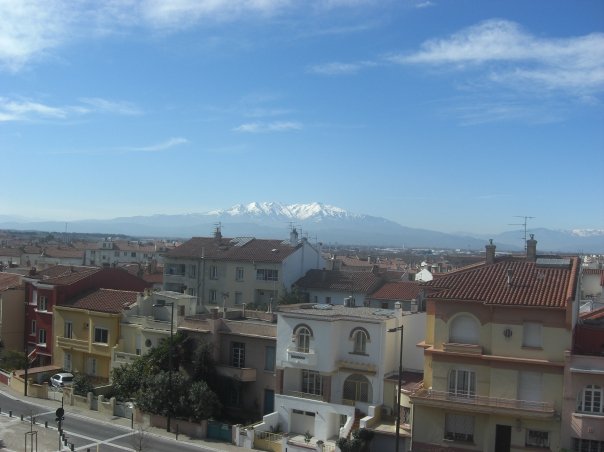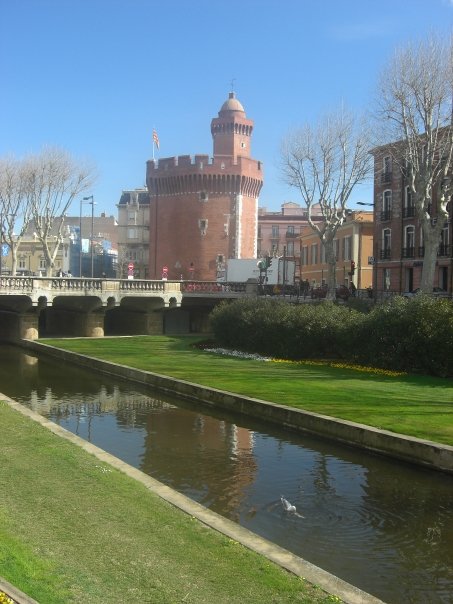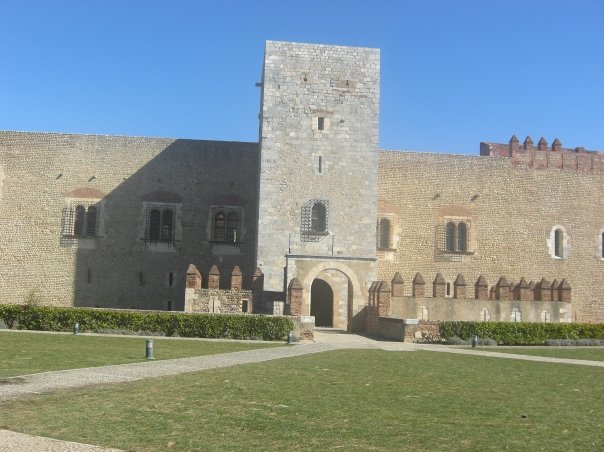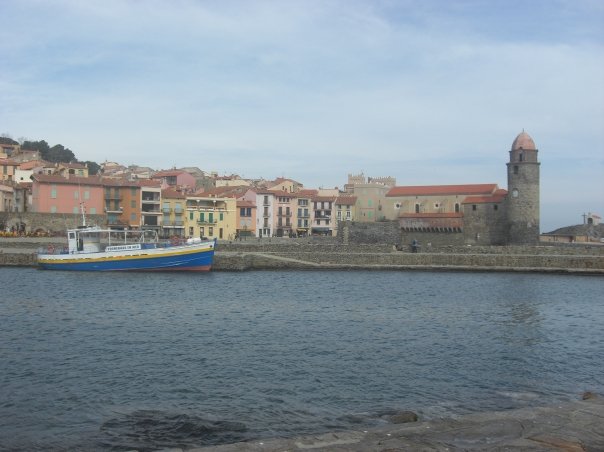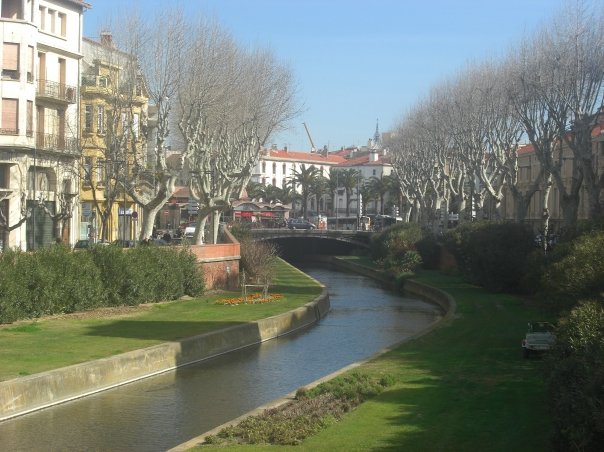This week we have a guest post from a new contributor on 48 Hour Adventure. A former Londoner and super active and talented blogger, Frankie is now gallavanting around South East Asia on her way to Australia to meet her boyfriend’s parents. She wrote this fantastic article on the southern French city of Perpignan for us, enjoy! – JM
Perpignan probably isn’t everyone’s first choice for a weekend break in the south of France, but then Perpignan isn’t your average French city. The richly historic city’s near identity crisis as a Catalan stronghold in France means it has the character, food and culture to make it a serious contender for a 48-hour get away, helped further by its easy accessibility from the UK and its welcoming warm Mediterranean climate.
Things to See and Do
Perpignan’s population of 300,000 are mostly sprawled out away from the city’s centre, which is made up of a picturesque old town and a more modern business and shopping districts. Though the shops and restaurants are decent enough for a quick look in the newer parts of town, head to the old town to explore the history and culture of French Catalonia that gives Perpignan its unique character.
Le Castillet
Slap bang in the middle of the city centre and on the cusp between old and new Perpignan, is the Castillet, which refers to the impressive looking turret of a fourteenth century gateway to the city.
Entry for a handful of Euros gains you access to enjoy the views at the top and also visit the Catalan Museum of Popular Arts, which is dedicated to celebrating Languedoc-Roussilon’s Catalan history, culture and crafts.
Cathédrale St-Jean
Sticking with Perpignanais buildings originating from the 1300s, head further into the old town to Place Léon Gambetta and you’ll find the city’s Cathédrale Saint-Jean.
A beautifully crafted cathedral, pop inside to marvel at the interior architecture which features striking Catalan ornaments and a wooden crucifix believed to date back to the 1400s.
Campo Santo
Around the corner to the rear of the cathedral you will stumble upon one of the oldest cemeteries in France, Campo Santo; a surprisingly quiet and peaceful place to rest in an alcove for a few moments and remark upon the dramatic white marble gothic architecture. It is also reportedly the only cloister-cemetery in the country.
Palais des Rois de Majorque
Overlooking Perpignan from the south is the Palais des Rois de Majorque, or the Palace of the Kings of Majorca and it is worth a climb up the hill for a visit. Parts of the palace are believed to be as old as the late thirteenth century but the chunky walls you now see are a little younger, from the late 1600s. An impressive royal palace in its time its architecture has hints of Moorish, Arabic and Spanish influences. There are often art or photo exhibitions on display within the Palace buildings so keep an eye out for anything good on when there.
Before you descend back down, take a moment to sit among the palm trees outside the Palace and admire the view which stretches all the way to the seasonally snow capped Pyrenees. Though be warned, thanks to these picturesque mountains there is often a “tranmuntana†wind blowing down through the streets of Perpignan so don’t let this catch you unaware on your way down or up to the Palace.
Arab and Romany Quarter
As you climb down from the Palace and head west you’ll find yourself in a less touristy part of the old town now predominantly populated by Arab and Romany families which throws in additional flavours to the French-Catalan recipe of Perpignan.
This is where you’ll find a decent north African coffee or kebab and a reasonably priced bag of delicious baklava. There are also animated daily markets in Place Joseph Cassanyes where you can buy any kind of spice or herb under the sun or you may choose to try some of the delicious cooked market stall food as a cheap lunch or snack.
Collioure
Fancy escaping the city briefly to explore a different part of French Catalonia? A 25-minute train ride (trains run roughly every hour) or a half hour car journey towards the Spanish border will take you to a small but historically important coastal town popular with Perpignan locals, Spanish neighbours and tourists alike for its views, beachfront restaurants and relaxed atmosphere.
Walk along the sea front before climbing a few steps to reach Notre-Dame-des-Anges church and look back at the view of the town. For more historical exploring head to the impressive Chateau Royal de Collioure, a one time strategically important palace and fortress for centuries of French and Spanish royals, emperors and battles in the region. It is believed that there has been a palace on the site since the Roman Empire.
A popular source of inspiration to many famous artists over the years, including Pablo Picasso, Collioure works hard to maintain its arty air. It’s easy to get lost in the town’s alleyways, which house art galleries, and boutique shops. Before heading back to the city lights of Perpignan maybe grab a seat at a seafront bar to enjoy a glass of Banyuls, the locally grown sweet red wine.
Food and Drink
The best of two European cuisines join forces in Perpignan making it very hard to have a bad meal. Both Catalan Tapas and traditional French dishes will also feature locally renowned ingredients such as figs and olives and most dishes will be accompanied by the Catalan Pa Amb Tomaquet, finely chopped tomatoes spread in oil on fresh bread. Seafood features on many menus thanks to Perpignan’s proximity to the coast as well as duck and other more unusual poultry meats.
Wine lists in Perpignan are often as long if not longer than the food menu and will certainly feature local Languedoc wines, however don’t overlook the Catalan beers on offer in (sadly) relatively few bars (head off the beaten track or towards Place des Espanades to increase your chances of supping a Cap D’Ona Blanche). You’ll find Banyuls and other sweet wines often accompany all courses of a meal eaten by les Perpignanais not just desert and the French institution of l’apero (aperitif before a meal) is very much alive and well in Perpignan.
For a special dinner, and you don’t mind risking getting lost in a maze of old town alleyways head to Le Figuier, on Rue Le Figuier , which is near Cathedrale St Jean, where menus on blackboards, animated waiters and the finest local cooking will guarantee a delicious French-Catalan fusion experience.
How to get there
Ryanair run daily flights to Perpignan from London Stansted from February/March to the end of September and depending on when you go and how far in advance you book fares will range from between £20 to £120 return. If you’re visiting outside of these months you may need to fly Air France from Paris or look at landing at another airport in the south of the country.
Unlike other Ryanair city airports, Perpignan-Rivesaltes airport genuinely is very close to Perpignan city (about 4km) and for a couple of Euros a bus will take you from the airport to either Perpignan bus station or Perpignan train station, both of which are excellently located and connected should you be arriving by dry land. A taxi from the airport to the centre of Perpignan will set you back around 25 Euros.
A bit of orientation
Here’s a handy map laying out all the sights mentioned above to give you an idea of where things are in Perpignan. Click on the markers to see the sight listed and zoom and pan around to see more of the map.
View Perpignan, France in a larger map
Get around in Perpignan
Thanks to its compact layout, manageable size and romantically curving and entwining streets, walking is the perfect mode of transport in Perpignan to take in the sights and sounds. Taxis can be flagged down but they aren’t cheap and if you do venture away from the city centre check out trains and buses as French public transport is surprisingly efficient and cheap, even in the Catalan south!
Perpignan also has its own bike hire cycle scheme similar to the Barclays Bikes in London, known as BIP (Bicyclette Perpignan)
Where to stay
Perpignan has all the French budget hotel stalwarts Etap, Hotel Ibis and Formule 1, and all are fairly well situated to walk around the city. Hostelling International lists one hostel, again located fairly centrally, though there are a limited number of private rooms.
Higher end hotels are also easy to find but if you’re up for something different check out some of the self-catering options run by English speaking ex-pats.
Budget
Like the rest of France, it is fair to say that Perpignan isn’t as cheap as it used to be thanks to the economic climate; in the last year even the locals have started to grumble about rises in prices now that it has started to affect the French national institution of eating out on the cheap. That said most restaurants will offer a very reasonably priced (and more often than not superbly cooked) Menu du Jour for 15 – 25 Euros which will get you 2 -3 courses and a glass of wine.
Groceries and public transport should be cheaper than in the UK but a night on the beers is no longer the bargain it once was with bars charging around 3-4 Euros or more for un demi, which thanks to today’s exchange rate may not fill you with an immediate joie de vivre.
Conclusion
Spend 48 hours in Perpignan and you will experience a different type of French city, one that provides fascinating history, a melange of cultures and delicious cuisine all with a Catalan twist.
As the fiercely proud centre of French Catalonia there is a certain je ne sais quoi and energy to Perpignan: marvel at the road signs in both languages, be amused how the cars beep outsider number plates and should you be there when the local rugby team USA Perpignan, known as “Les Catalanesâ€, win a big game then you’ll struggle not to get lost in the French Catalan party spirit.
Featured photo provided by Eole via flickr.
